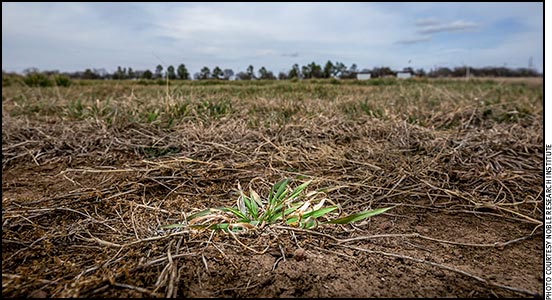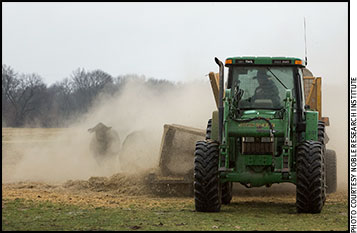
Noble agricultural consultants advise producers to immediately assess water and forage sources. Farmers and ranchers should match expected forage production and water quantity with animal demand, which may lead to destocking of cattle herds.
Drought Requires Immediate Action
Resources available from the Noble Research Institute.
Farmers and ranchers in the Southern Great Plains are in a drought with conditions worsening since November.

As drought conditions continue, farmers and ranchers should consider taking immediate steps, such as buying hay while it is still available and culling cows, to help mitigate further impacts to their operations.
While the drought affects many of the contiguous states, the states experiencing the worst conditions are Oklahoma, Texas, Arizona and Kansas. According to the current U.S. Drought Monitor, the entire state of Oklahoma is in at least a severe drought; more than 80% of the state is considered either in a severe or extreme drought. South of the Red River, 90% of Texas is in some level of drought, from abnormally dry to extreme drought.
“Producers need to have contingency plans in place now to help decision-making easier as we move through the spring,” says Hugh Aljoe, director of producer relations. “Even with rain in the short-term forecast, we are expecting the conditions to worsen through the spring.”
Noble agricultural consultants advise producers to immediately assess water and forage sources. Farmers and ranchers should match expected forage production and water quantity with animal demand, which may lead to destocking of cattle herds.
As drought conditions continue, farmers and ranchers should consider taking immediate steps, such as buying hay while it is still available and culling cows, to help mitigate further impacts to their operations. Historically, cattle prices decline and supplemental feed costs increase the longer a drought persists.
“It is important that farmers and ranchers gather their information and take steps as soon as possible,” Aljoe said. “Keeping close records and knowing production costs is important in making timely and effective management decisions.”
For up-to-date drought management information, the Noble Research Institute has developed a special web page (www.noble.org/drought) to serve as a central source for resources to assist agricultural producers throughout this difficult situation. Timely management tips will also be provided on the organization’s social media channels.

Editor’s Note: This article is from the Noble Research Institute.






